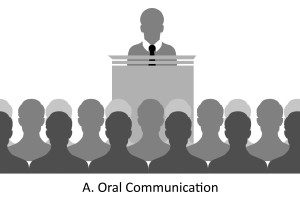
– What does it mean to network using social media?
Based on the first video about personal learning network, we get to know that with the assistance of world wide web and the invention of Wi-Fi, people get more and more connected to each other and a huge wealth of information. Granovetter (1983) pointed out that network gathers people who think alike or have similar interests around the world into a heterogeneous circle. With the convenience of network, people would like to use social media to stay connected with friends, family and peers. They can share images, blogs, leave comments on others’ posts and so on through the medium of social media. Also, through social media, people can continuously lifelong learn (Johnson, 2008).
– How are we motivated to participate in networked publics?
People can actively participate in networked publics in various of means. Firstly, they can use different social media, such as Emails, blogs, and Facebook, to share personal information and get business public awareness. Secondly, we can have online courses through networked websites to gain more learning opportunities. These learning websites are efficient and low-cost, which provide more convenience to us. Thirdly, we can participate in different groups that we are interested in and find more friends who think alike.
– What are the risks & rewards of public communications?
There are numerous risks and rewards of public communications. When it comes to risks, we have to consider technologies. Currently, technology does not yet support the deeper understanding of networking practice. For example, the distinction between strong, weak and very weak ties with respect to content of the relationship is not always visible in online social networking sites (Attwell, et al., 2009). Also, networked publics more or less confuse the boundaries between publics and the privates and disrupt the previous social environment. Through public communications, we might get discriminated or verbally insulted by others. Some might even steal our accounts and encounter network fraud.
However, there are obvious rewards of public communications. Firstly, it is low-cost and convenient for learners to gain effective information. For example, if we want to know more about space, we can browse Youtube to watch related visual videos or take related online courses to expand our knowledge. Secondly, networked public communications can boost our relationship with friends and family. Although we do not meet each other face-to-face frequently, we can still have public communications.
References
Graham Attwell, John Cook and Andrew Ravenscroft, 2009. “Appropriating technologies for contextual knowledge: Mobile personal learning environments,” In: Miltiadis D. Lytras, Patricia Ordóñez de Pablos, Ernesto Damiani, David Avison, Ambjörn Naeve and David G. Horner (editors). Best practices for the knowledge society: Knowledge, learning, development and technology for all. Communications in Computer and Information Science, volume 49. Berlin: Springer–Verlag, pp. 15–25.
Mark Granovetter, 1983. “The strength of weak ties: A network theory revisited,” Sociological Theory, volume 1, pp. 201–233.
Mike Johnson, 2008. “Expanding the concept of networked learning,” In: Vivien Hodgson, Chris Jones, Theodoros Kargidis, David McConnell, S. Retalis, Demosthenes Stamatis, and Maria Zenios (editors). Proceedings of the Sixth International Conference on Networked Learning (5–6 May, Halkidiki, Greece), pp. 154–161.
Recent Comments